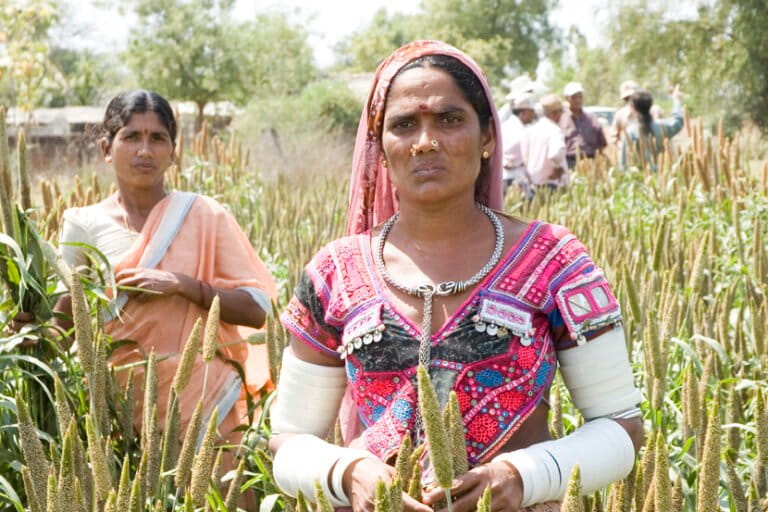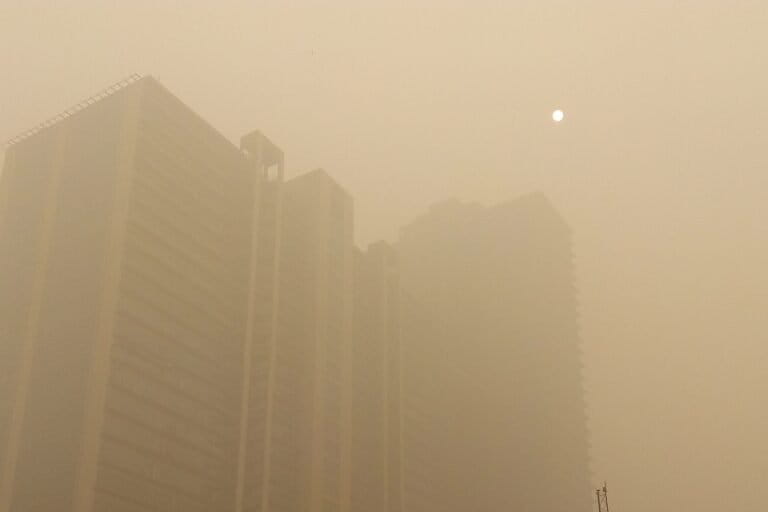- The UNEP Emissions Gap Report 2025 warns that even if all national climate pledges are fully implemented, the world is still on track for 2.3–2.5°C of warming, far above the Paris target of 1.5°C.
- The report finds that India recorded the highest absolute rise in total greenhouse gas emissions, while its growth rate stood at 3.6 percent, second to Indonesia.
- Ahead of COP30 in Belém, UNEP urges countries, especially major emitters, to take unprecedented and immediate action to close the global emissions gap.
Just days before world leaders gathered in Belém, Brazil, for the COP30 climate conference, the United Nations Environment Programme (UNEP) released a warning that global climate action remains far too weak to meet the goals of the Paris Agreement. The Emissions Gap Report 2025, launched on November 4 this year, finds that even if all current national climate pledges are fulfilled, global temperatures are still on track to rise between 2.3°C and 2.5°C this century.
Under existing policies, the planet is heading for 2.8 degrees of warming, slightly better than last year’s projection of 3.1 degrees but still far beyond safe limits. The report says the apparent improvement of 0.3 degrees includes a 0.1-degree correction due to methodological updates in emissions data. If the United States follows through with its planned withdrawal from the Paris Agreement, that would cancel another 0.1 degree of progress.
The report warns that global temperatures will temporarily exceed the aspirational target of 1.5°C under the Paris Agreement. The best-case scenario would involve a temporary overshoot of approximately 0.3°C before cooling later this century, but this depends on rapid and deep emissions cuts commencing immediately.
The report examines the necessary steps to limit overshoot to approximately 0.3°C, with a 66% chance, and return to 1.5°C by 2100, under the “rapid mitigation action from 2025” scenario. This scenario would require cutting 2030 emissions by 26% and 2035 emissions by 46%, compared to 2019 levels.
Nations have had three attempts to deliver promises made under the Paris Agreement, and each time they have landed off target, said Inger Andersen, Executive Director, UNEP, in a statement accompanying the report, referring to the Nationally Determined Contributions, updates to the climate pledges in 2020 and new pledges this year, ahead of COP30. “While national climate plans have delivered some progress, it is nowhere near fast enough, which is why we still need unprecedented emissions cuts in an increasingly tight window, with an increasingly challenging geopolitical backdrop.”

She states that proven solutions already exist to achieve the goals. “From the rapid growth in cheap renewable energy to tackling methane emissions, we know what needs to be done. Now is the time for countries to go all in and invest in their future with ambitious climate action — action that delivers faster economic growth, better human health, more jobs, energy security and resilience.”
The Emissions Gap Report, now in its sixteenth year, tracks progress in limiting warming below 2°C and pursuing 1.5°C in line with the Paris Agreement.
India’s emissions grew fastest in absolute terms
Among the G20 economies, India recorded the most significant absolute increase in total greenhouse gas emissions globally in 2024, according to the report. In percentage terms, Indonesia had the highest growth rate at 4.6%, followed by India at 3.6%, but India’s total increase in emissions volume was the largest globally.
Currently, the six largest emitters in terms of total GHG emissions are China, the United States of America, India, the European Union, the Russian Federation and Indonesia. In terms of historic cumulative carbon dioxide emissions, the U.S. has produced the most global CO2 emissions to date, followed by China and the European Union.
While India’s per capita emissions remain below the global average, its overall carbon footprint continues to expand as industrial activity and energy demand surge. Coal continues to dominate India’s power sector, providing almost half of the country’s electricity generation and transport and cement production have also added to the rise.
The report also highlights that India, along with more than 100 other countries has not yet submitted its Common Reporting Tables (CRTs), a national greenhouse gas inventory of each country. The CRT is one of the documents as part of the Biannual Transparency Report under the Enhanced Transparency Framework of the Paris Agreement. The CRT tables are designed to standardise reporting on national emissions and progress toward targets.

G20 not on track for 2030 targets
The report dedicates a section to the G20 countries, which collectively account for approximately 80 percent of global emissions. It finds that the group is not collectively on track to meet even its 2030 NDC targets, let alone the more ambitious 2035 goals that are expected to be announced at COP30.
Only one-third of the Parties to the Paris Agreement, covering about 63% of global emissions, have submitted or announced new NDCs, as of September this year. The report notes that insufficient action is being taken to minimise overshoot and keep temperatures from escalating.
Developing countries estimate that they will need approximately $5.3 trillion to meet their NDC commitments, highlighting a significant gap between ambition and available finance.
India has consistently argued that developed economies have failed to deliver the $100 billion annual funding promised under the UNFCCC framework. Indian negotiators are expected to highlight this issue again at COP30, especially as developing nations prepare their next round of NDCs with mitigation targets for 2035.
Reactions from experts
The UNEP report drew reactions from scientists and advocates worldwide.
Rachel Cleetus, the senior policy director of the Climate and Energy Program at the Union of Concerned Scientists, a non-profit science advocacy organisation, called the findings “alarming, enraging, and heartbreaking.” She said in a statement, “Years of grossly insufficient action from richer nations and continued climate deception and obstruction by fossil fuel interests are directly responsible for bringing us here. World leaders still have the power to act decisively to sharply rein in heat-trapping emissions and any other choice would be an unconscionable dereliction of their responsibility to humanity.”
Richard Black, Director of Policy and Strategy at Ember, a global energy think tank, highlighted encouraging signs in the renewable energy sector. In a statement, he said, “While an important signal, NDCs only tell part of the story. National renewable energy plans paint a more optimistic picture of economies embracing the clean energy transition, and deployment rates are more optimistic still. Climate change is just one of the drivers behind bulging renewables pipelines, and the other drivers, such as energy security and affordability, are arguably stronger in these geopolitically uncertain times. The evidence is now convincing that whatever a government’s motivation — economic growth, security, cleaner air, more jobs or import independence — the clean-energy economy offers more opportunities than sticking with the fossil-fuel model.”
Catherine Abreu, Director of the International Climate Politics Hub, said the problem lies not with the Paris Agreement but with countries that have failed to deliver on it. “This year’s Emissions Gap Report makes it abundantly clear that it isn’t the Paris Agreement that’s failing — it’s a handful of powerful countries in the G20 who are failing to do what they’ve promised to do on climate change,” she said in a statement.
Read more: Amazon calls the world to account at 30th UN climate summit in Belém
Banner image: Industries near Mumbai, Maharashtra. Representative image by Sumaira Abdulali via Wikimedia Commons (CC BY-SA 4.0).














